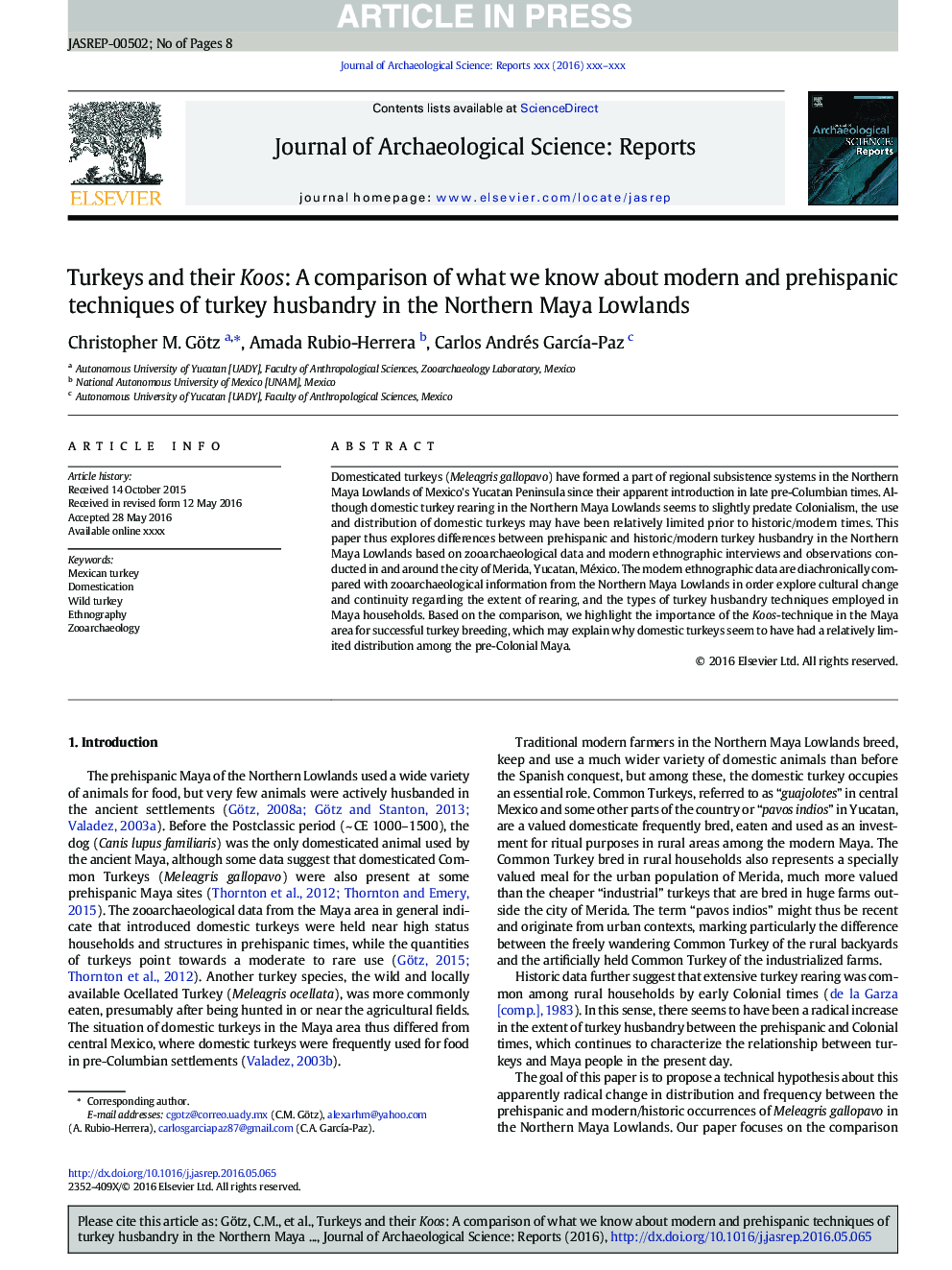| Article ID | Journal | Published Year | Pages | File Type |
|---|---|---|---|---|
| 5112192 | Journal of Archaeological Science: Reports | 2016 | 8 Pages |
Abstract
Domesticated turkeys (Meleagris gallopavo) have formed a part of regional subsistence systems in the Northern Maya Lowlands of Mexico's Yucatan Peninsula since their apparent introduction in late pre-Columbian times. Although domestic turkey rearing in the Northern Maya Lowlands seems to slightly predate Colonialism, the use and distribution of domestic turkeys may have been relatively limited prior to historic/modern times. This paper thus explores differences between prehispanic and historic/modern turkey husbandry in the Northern Maya Lowlands based on zooarchaeological data and modern ethnographic interviews and observations conducted in and around the city of Merida, Yucatan, México. The modern ethnographic data are diachronically compared with zooarchaeological information from the Northern Maya Lowlands in order explore cultural change and continuity regarding the extent of rearing, and the types of turkey husbandry techniques employed in Maya households. Based on the comparison, we highlight the importance of the Koos-technique in the Maya area for successful turkey breeding, which may explain why domestic turkeys seem to have had a relatively limited distribution among the pre-Colonial Maya.
Related Topics
Social Sciences and Humanities
Arts and Humanities
History
Authors
Christopher M. Götz, Amada Rubio-Herrera, Carlos Andrés GarcÃa-Paz,
